Your cart is currently empty!
Tag: Data Center Sustainability
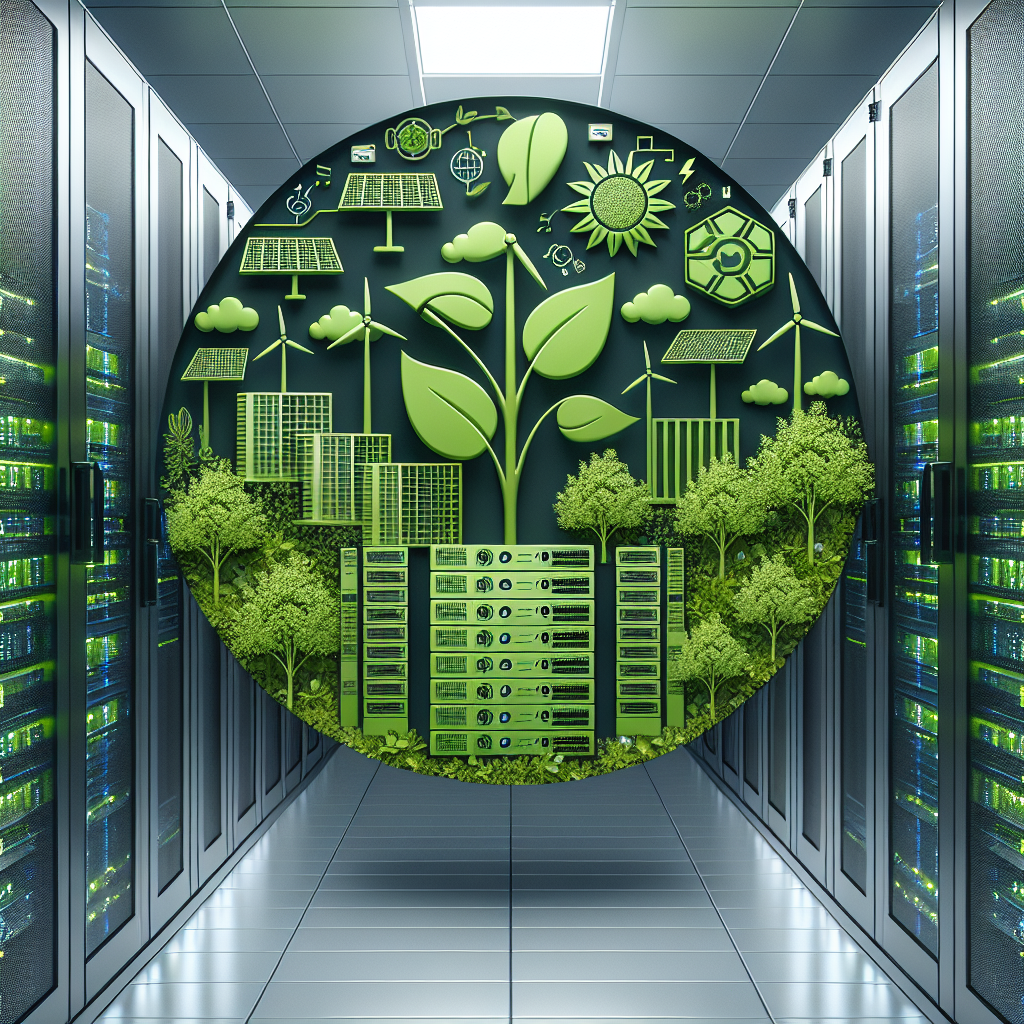
Eco-Friendly Data Centers: Best Practices for Achieving Sustainability Goals
In today’s digital age, data centers play a crucial role in storing and processing vast amounts of information. However, the environmental impact of these facilities cannot be ignored. The energy consumption and carbon emissions associated with data centers are significant, making it imperative for companies to prioritize sustainability in their operations.One way to achieve sustainability goals in data centers is by adopting eco-friendly practices. These practices not only help reduce the environmental footprint of data centers but also lead to cost savings and improved efficiency. Here are some best practices for achieving sustainability goals in data centers:
1. Energy Efficiency: One of the key ways to reduce the environmental impact of data centers is by improving energy efficiency. This can be done by using energy-efficient hardware, optimizing cooling systems, and implementing virtualization techniques to reduce the number of physical servers needed.
2. Renewable Energy: Switching to renewable energy sources such as solar or wind power is another effective way to make data centers more eco-friendly. By generating clean energy on-site or purchasing renewable energy credits, data centers can significantly reduce their carbon footprint.
3. Efficient Cooling Systems: Cooling systems account for a significant portion of energy consumption in data centers. By implementing efficient cooling solutions such as hot aisle/cold aisle containment, airflow management, and free cooling, data centers can reduce energy usage and lower operating costs.
4. Data Center Design: Sustainable data center design is essential for achieving sustainability goals. This includes using energy-efficient building materials, maximizing natural light, and incorporating green spaces to reduce heat island effects.
5. Recycling and E-Waste Management: Proper recycling and e-waste management practices are crucial for minimizing the environmental impact of data centers. By recycling old equipment, reducing waste, and responsibly disposing of e-waste, data centers can help conserve resources and reduce pollution.
6. Monitoring and Reporting: Regular monitoring of energy usage and environmental performance is essential for tracking progress towards sustainability goals. By collecting data on energy consumption, carbon emissions, and water usage, data centers can identify areas for improvement and make informed decisions to achieve sustainability targets.
In conclusion, achieving sustainability goals in data centers requires a holistic approach that encompasses energy efficiency, renewable energy, efficient cooling systems, sustainable design, recycling, and monitoring. By implementing eco-friendly practices, data centers can reduce their environmental impact, lower operating costs, and contribute to a more sustainable future. It is imperative for companies to prioritize sustainability in their data center operations to mitigate the environmental impact of their digital infrastructure.

Building a Greener Future: The Role of Data Centers in Sustainable Development
In today’s digital age, data centers play a crucial role in powering the internet and storing vast amounts of information. However, the environmental impact of data centers has become a growing concern in recent years. As the demand for data continues to grow, so does the energy consumption and carbon footprint of these facilities.Building a greener future requires a shift towards more sustainable practices in data center operations. This includes reducing energy consumption, increasing efficiency, and utilizing renewable energy sources. By implementing these strategies, data centers can play a significant role in promoting sustainable development and reducing their environmental impact.
One of the key ways to make data centers more sustainable is by improving energy efficiency. This can be achieved through the use of energy-efficient hardware, cooling systems, and server virtualization. By optimizing the use of resources and minimizing energy waste, data centers can significantly reduce their overall energy consumption and carbon emissions.
In addition to energy efficiency, data centers can also make a positive impact on the environment by transitioning to renewable energy sources. By investing in solar, wind, or hydroelectric power, data centers can reduce their reliance on fossil fuels and decrease their carbon footprint. Many leading tech companies have already committed to powering their data centers with 100% renewable energy, setting a positive example for the industry as a whole.
Furthermore, data centers can also contribute to sustainable development by implementing green building practices. This includes using eco-friendly materials, designing for energy efficiency, and incorporating natural ventilation and lighting. By building sustainable data centers, companies can reduce their environmental impact and create healthier, more efficient working environments for their employees.
Overall, data centers have a significant role to play in building a greener future. By adopting sustainable practices, reducing energy consumption, and investing in renewable energy sources, data centers can make a positive impact on the environment and contribute to global efforts to combat climate change. It is crucial for companies to prioritize sustainability in their data center operations and work towards creating a more sustainable and environmentally friendly digital infrastructure for the future.
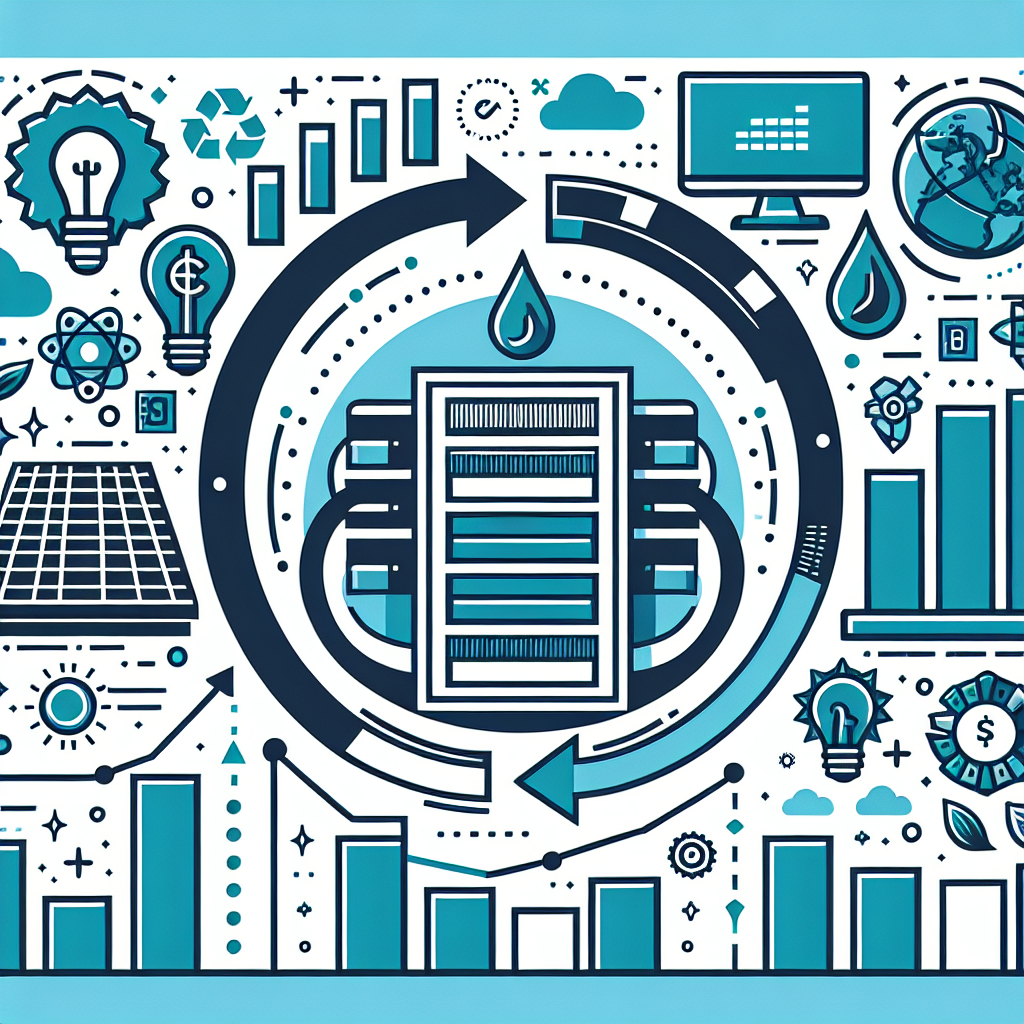
Measuring Success: Metrics for Tracking Data Center Sustainability
In today’s world, sustainability is a key focus for businesses across all industries. Data centers, which are essential for storing and processing large amounts of data, are no exception. As the demand for data centers continues to grow, so does the need to ensure that they are operating in a sustainable manner. Measuring the sustainability of a data center is crucial in order to track progress, identify areas for improvement, and ultimately reduce the environmental impact of these facilities.There are several key metrics that can be used to track the sustainability of a data center. These metrics can help data center operators understand their energy usage, water consumption, waste generation, and overall environmental impact. By monitoring these metrics over time, data center operators can set goals for improvement and track their progress towards becoming more sustainable.
One of the most important metrics for tracking data center sustainability is energy consumption. Data centers are known for their high energy usage, so it is important to monitor how much energy is being used and where it is being used. This can be done through monitoring tools that track energy usage in real-time, as well as through periodic energy audits. By understanding how energy is being used and where efficiencies can be made, data center operators can reduce their energy consumption and lower their carbon footprint.
Another important metric for measuring data center sustainability is water consumption. Data centers require a significant amount of water for cooling and other operations, so it is important to track how much water is being used and ensure that it is being used efficiently. By implementing water-saving measures, such as using recycled water for cooling or implementing water-efficient cooling systems, data center operators can reduce their water consumption and minimize their impact on local water resources.
Waste generation is another key metric for tracking data center sustainability. Data centers generate a significant amount of electronic waste, as well as waste from packaging materials and other consumables. By tracking waste generation and implementing recycling and waste reduction programs, data center operators can minimize their environmental impact and reduce the amount of waste that ends up in landfills.
In addition to these key metrics, there are other factors that can be used to measure data center sustainability, such as carbon emissions, renewable energy usage, and overall environmental impact. By tracking these metrics and setting goals for improvement, data center operators can work towards making their facilities more sustainable and reducing their environmental footprint.
In conclusion, measuring the sustainability of data centers is essential for tracking progress, identifying areas for improvement, and ultimately reducing the environmental impact of these facilities. By monitoring key metrics such as energy consumption, water usage, and waste generation, data center operators can set goals for improvement and work towards becoming more sustainable. With the growing demand for data centers, it is more important than ever to ensure that these facilities are operating in a sustainable manner and minimizing their impact on the environment.
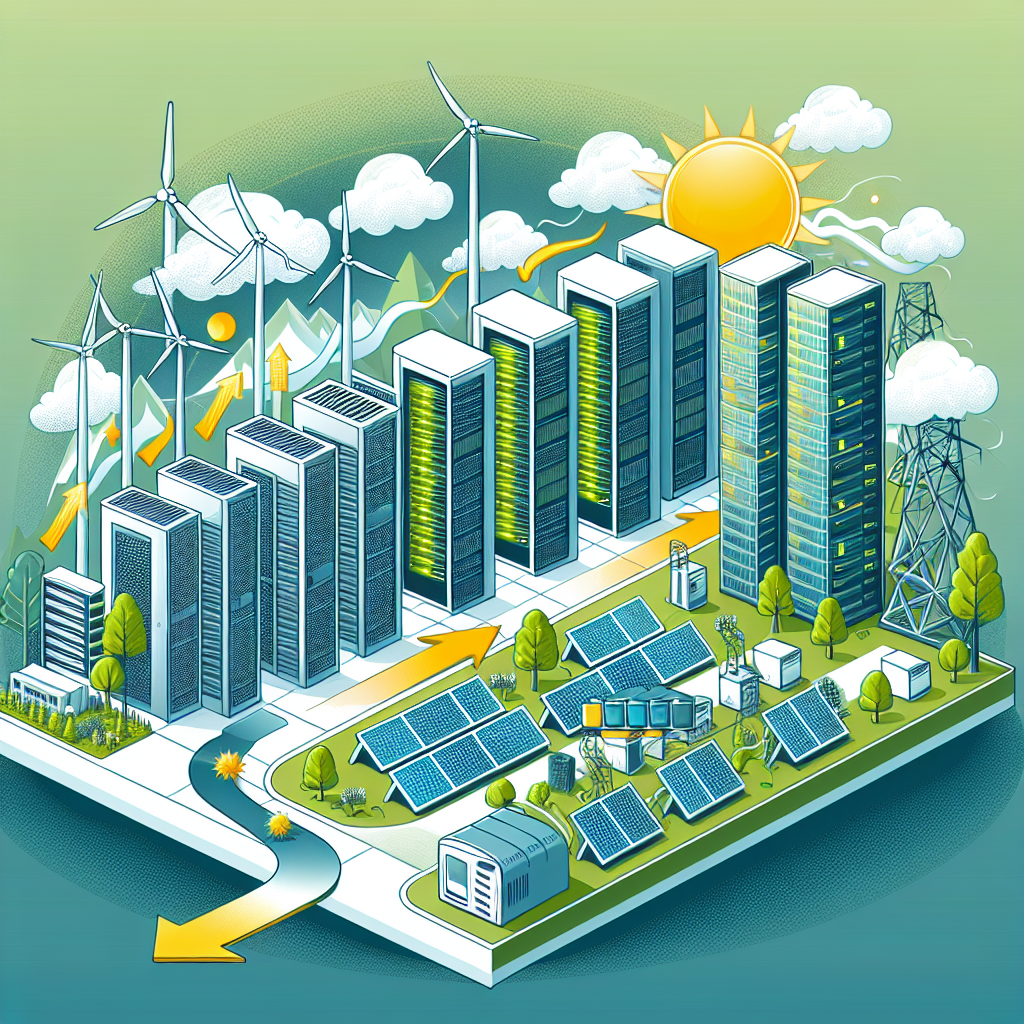
From Energy Efficiency to Renewable Energy: The Evolution of Data Center Sustainability
Data centers play a crucial role in our modern society, powering the digital infrastructure that supports everything from social media to online shopping. As the demand for data centers continues to grow, so too does the need for sustainable practices to minimize their environmental impact.One of the key ways in which data centers have evolved in terms of sustainability is through energy efficiency. In the early days of data centers, energy consumption was a major concern, with many facilities guzzling vast amounts of electricity to power their servers and cooling systems. However, as awareness of the environmental impact of energy consumption has grown, data center operators have worked to improve the energy efficiency of their facilities. This has included measures such as upgrading to more efficient servers, optimizing cooling systems, and implementing energy management software to monitor and reduce energy usage.
But energy efficiency is just the beginning when it comes to making data centers more sustainable. In recent years, there has been a growing focus on transitioning to renewable energy sources to power data centers. This shift is driven by a combination of factors, including the declining cost of renewable energy technologies, government incentives for renewable energy adoption, and increasing pressure from customers and stakeholders to reduce carbon emissions.
Many data center operators are now investing in solar, wind, and other renewable energy sources to power their facilities. Some are even going a step further by investing in on-site renewable energy generation, such as installing solar panels or wind turbines on the roof of their data centers. This not only reduces the carbon footprint of the data center but also helps to insulate operators from fluctuating energy prices and supply chain disruptions.
In addition to renewable energy, data center operators are also exploring other innovative sustainability solutions. For example, some are experimenting with using waste heat from servers to warm nearby buildings or even to generate electricity. Others are exploring the use of energy storage technologies, such as batteries or flywheels, to store excess energy and reduce reliance on the grid during peak demand periods.
Overall, the evolution of data center sustainability from a focus on energy efficiency to a broader embrace of renewable energy and other innovative solutions is a positive trend for both the industry and the planet. By continuing to invest in sustainable practices, data center operators can not only reduce their environmental impact but also improve their bottom line and enhance their reputation with customers and stakeholders. As the demand for data centers continues to grow, it is crucial that operators continue to prioritize sustainability to ensure a greener, more sustainable future for all.
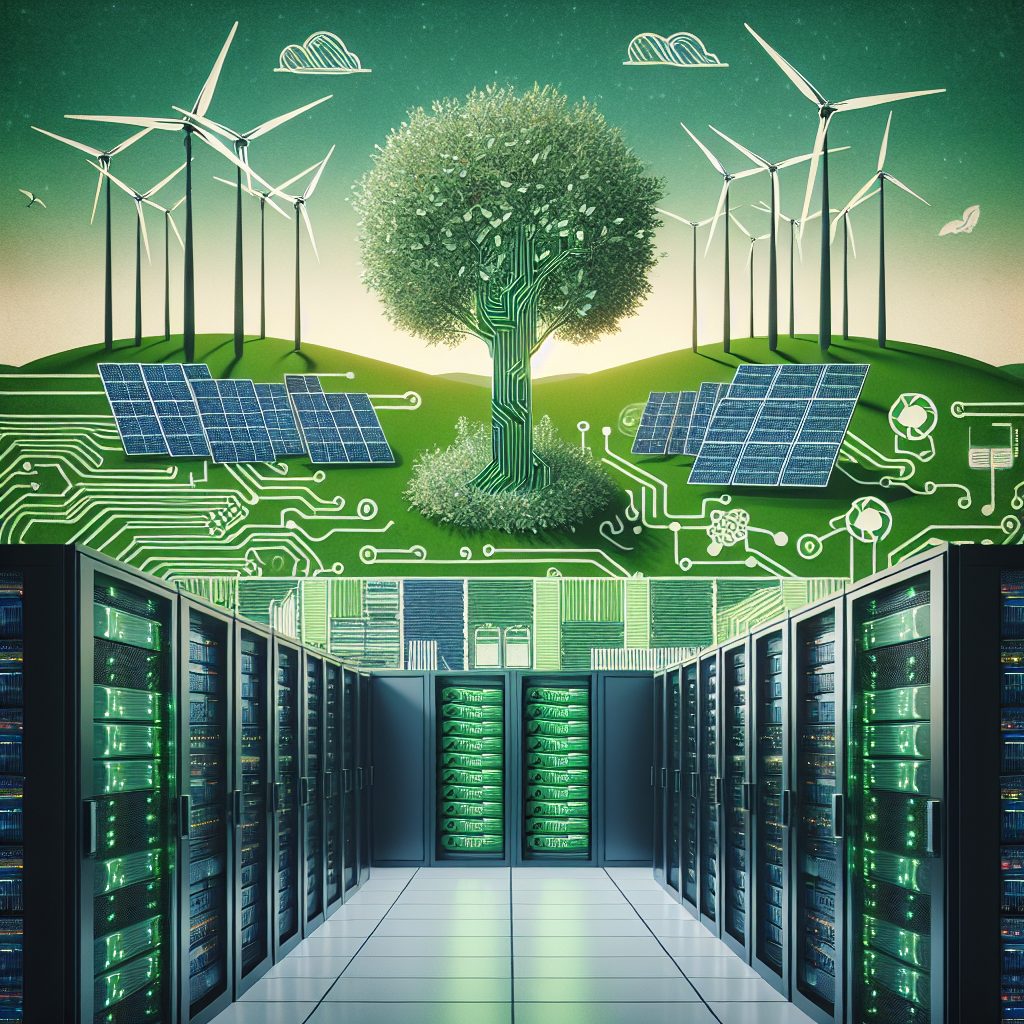
Greening the Cloud: Strategies for Achieving Data Center Sustainability
In recent years, there has been a growing awareness of the environmental impact of data centers and cloud computing. As the demand for digital services continues to increase, so does the energy consumption and carbon footprint of these facilities. In response, many organizations are looking for ways to make their data centers more sustainable and environmentally friendly.One of the key strategies for achieving data center sustainability is greening the cloud. This involves implementing practices and technologies that reduce energy consumption, minimize waste, and lower carbon emissions. By adopting green cloud strategies, organizations can not only reduce their environmental impact but also save on costs and improve their reputation as a socially responsible company.
One of the most effective ways to green the cloud is by optimizing data center operations. This includes using energy-efficient hardware, such as servers and cooling systems, and implementing virtualization and consolidation techniques to maximize resource utilization. By reducing the number of physical servers needed to run applications, organizations can significantly lower their energy consumption and carbon emissions.
Another important aspect of greening the cloud is using renewable energy sources to power data centers. Many organizations are investing in solar, wind, and hydroelectric power to reduce their reliance on fossil fuels and lower their carbon footprint. By generating clean energy on-site or purchasing renewable energy credits, companies can make their data centers more sustainable and environmentally friendly.
In addition to optimizing operations and using renewable energy, organizations can also reduce their environmental impact by implementing energy-efficient cooling systems, recycling electronic waste, and promoting remote working to reduce the need for physical office space. By adopting a holistic approach to sustainability, companies can not only reduce their carbon footprint but also create a more resilient and efficient data center infrastructure.
Overall, greening the cloud is essential for achieving data center sustainability in the digital age. By implementing energy-efficient technologies, renewable energy sources, and environmentally friendly practices, organizations can reduce their environmental impact, lower costs, and enhance their reputation as a responsible corporate citizen. As the demand for digital services continues to grow, it is crucial for companies to prioritize sustainability and take proactive steps to green the cloud.
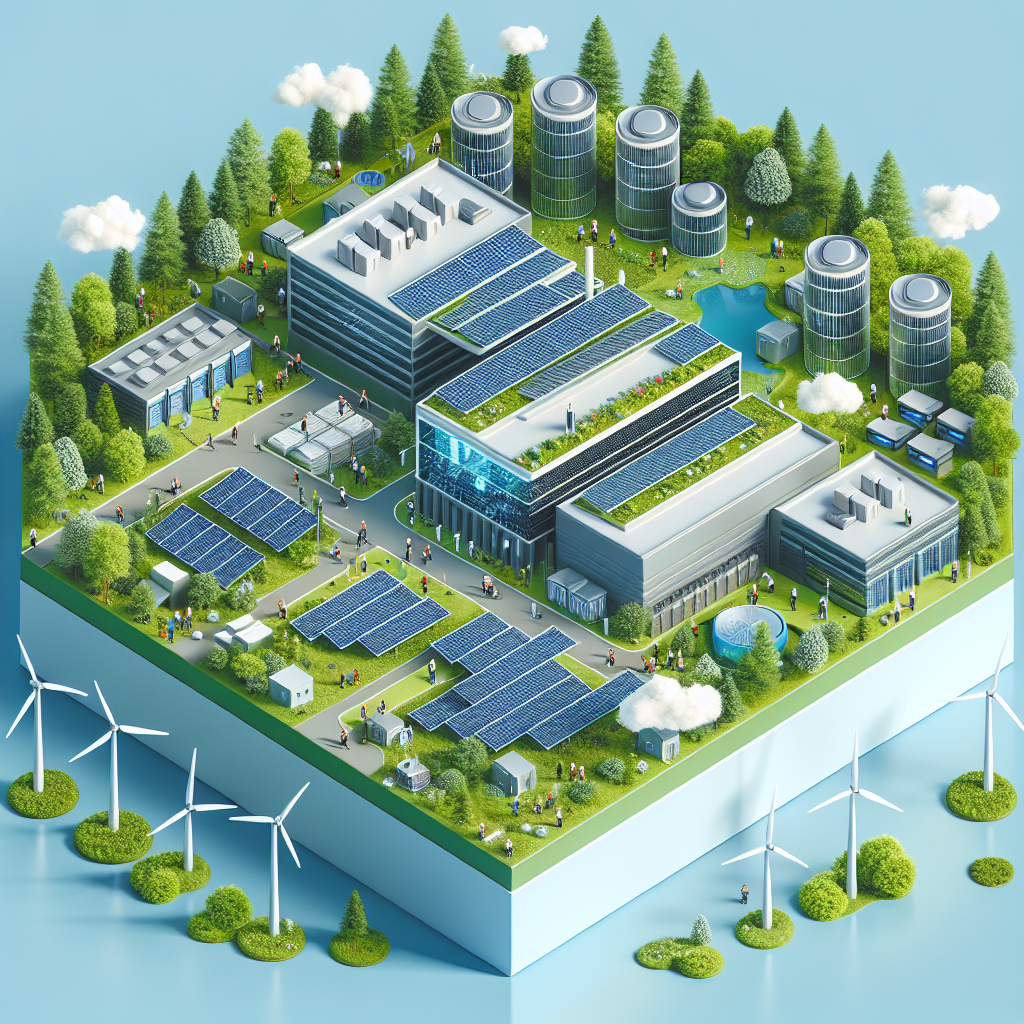
The Future of Data Center Sustainability: How Companies are Reducing Their Environmental Footprint
In recent years, there has been a growing concern over the environmental impact of data centers. These facilities, which house the servers and equipment that power the internet and store vast amounts of data, consume massive amounts of energy and produce significant amounts of carbon emissions. As the demand for data storage and processing continues to grow, so too does the need for more sustainable practices in the data center industry.Fortunately, many companies are now taking steps to reduce their environmental footprint and make their data centers more sustainable. One of the most common ways that companies are achieving this is by increasing the energy efficiency of their data centers. This can involve upgrading equipment and infrastructure to be more energy-efficient, implementing virtualization technologies to consolidate servers and reduce power consumption, and using renewable energy sources such as solar or wind power to power their data centers.
Another key strategy that companies are using to reduce their environmental impact is by implementing water conservation measures in their data centers. Data centers require large amounts of water for cooling purposes, and by implementing more efficient cooling systems and recycling water, companies can significantly reduce their water usage and lessen their impact on local water resources.
In addition to energy and water conservation measures, companies are also looking at ways to reduce the amount of waste generated by their data centers. This can involve recycling old equipment, using more environmentally friendly materials in construction and equipment, and implementing waste reduction and recycling programs.
Overall, the future of data center sustainability looks promising as more companies are realizing the importance of reducing their environmental impact and are taking concrete steps to make their data centers more sustainable. By implementing energy efficiency measures, conserving water, and reducing waste, companies can not only reduce their environmental footprint but also save money on operating costs in the long run. With the continued focus on sustainability in the data center industry, we can expect to see even more innovative and effective solutions emerge in the coming years.
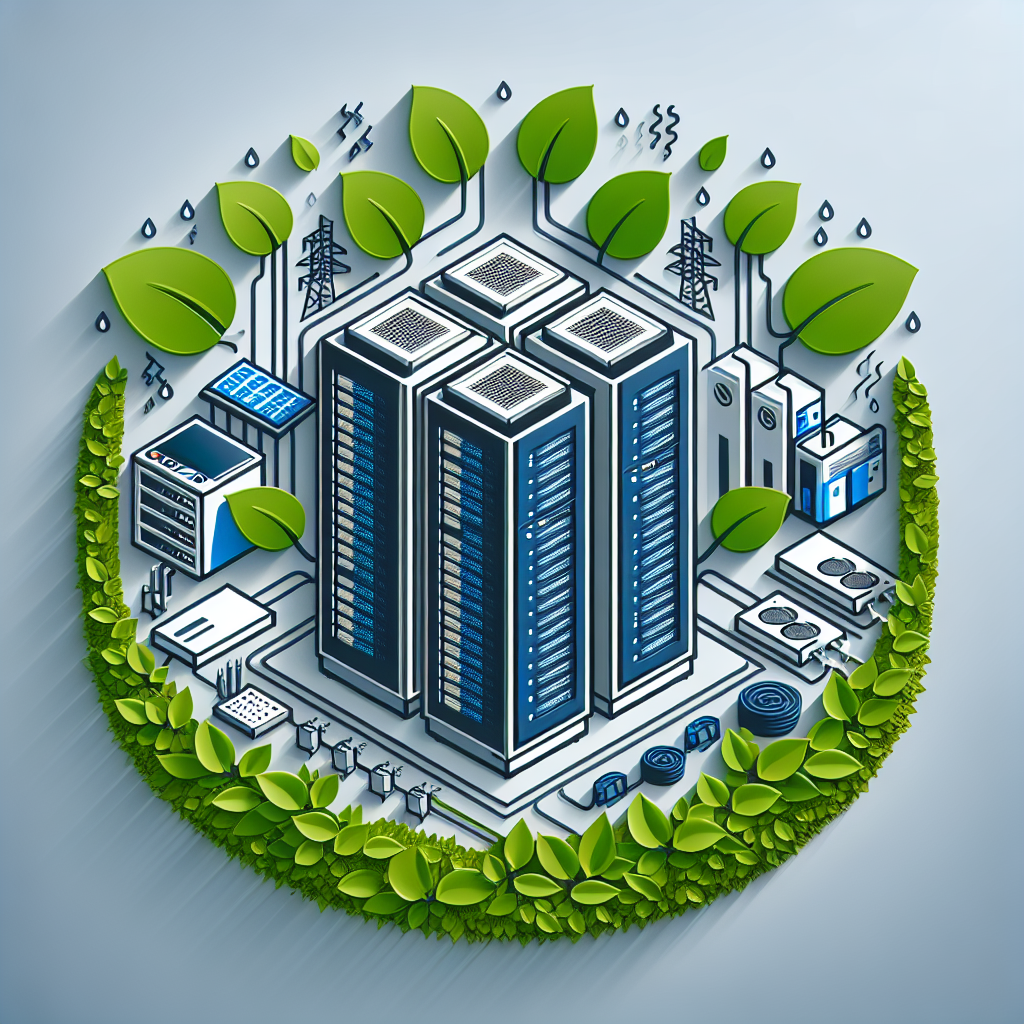
Measuring Success: Metrics for Assessing Data Center Sustainability
In today’s world, sustainability is a key factor in measuring the success of any organization. This is especially true for data centers, which consume a significant amount of energy and resources to operate. As the demand for data storage and processing continues to grow, it is essential for data centers to prioritize sustainability in order to reduce their environmental impact and ensure long-term viability.Measuring the sustainability of a data center involves tracking and analyzing various metrics that provide insight into its energy efficiency, resource usage, and overall environmental impact. By monitoring these key indicators, data center operators can identify areas for improvement and implement strategies to enhance their sustainability performance.
One important metric for assessing data center sustainability is Power Usage Effectiveness (PUE). PUE is a ratio that measures how efficiently a data center uses energy for its IT equipment versus its overall energy consumption, including cooling and lighting. A lower PUE value indicates higher energy efficiency, with the ideal target being as close to 1.0 as possible. By optimizing their PUE, data centers can reduce their energy consumption and lower their carbon footprint.
Another important metric is Water Usage Effectiveness (WUE), which measures the amount of water used for cooling and other purposes in relation to the data center’s IT equipment. By tracking WUE, data centers can identify opportunities to reduce water usage and implement water-saving measures, such as using recycled water for cooling or implementing more efficient cooling technologies.
In addition to energy and water usage, data centers should also track their carbon footprint, waste generation, and recycling efforts. By calculating their carbon emissions and waste output, data centers can set targets for reducing their environmental impact and improving their sustainability performance. Implementing recycling programs, reducing waste generation, and sourcing renewable energy are all strategies that can help data centers achieve their sustainability goals.
Furthermore, data centers should consider the use of renewable energy sources, such as solar or wind power, to reduce their reliance on fossil fuels and lower their carbon emissions. By investing in renewable energy infrastructure and purchasing renewable energy credits, data centers can further enhance their sustainability credentials and contribute to a cleaner, greener future.
Overall, measuring the success of a data center’s sustainability efforts requires a comprehensive approach that considers a range of key metrics and indicators. By tracking and analyzing these metrics, data center operators can gain valuable insights into their environmental performance and take proactive steps to improve their sustainability practices. In an increasingly environmentally-conscious world, data centers that prioritize sustainability will not only reduce their impact on the planet but also enhance their reputation and competitiveness in the marketplace.
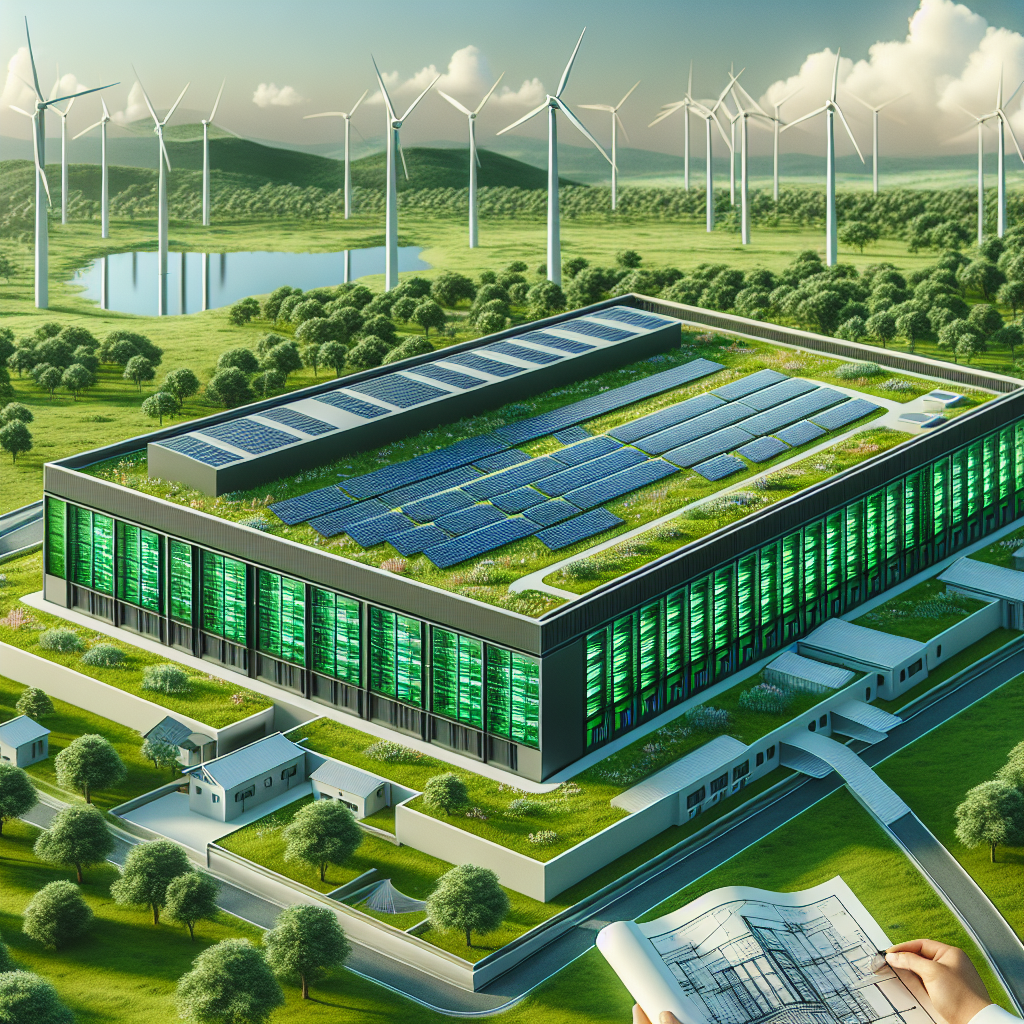
How Data Center Design and Operation Can Contribute to Sustainability
As the world becomes more aware of the environmental impact of technology, the focus has shifted towards creating sustainable data center designs and operations. Data centers are essential in today’s digital age, but they also consume a significant amount of energy and resources. By implementing sustainable practices in data center design and operation, companies can reduce their carbon footprint and contribute to a more environmentally friendly future.One key aspect of sustainable data center design is energy efficiency. Data centers are known to be huge energy consumers, with the power needed to run servers, cooling systems, and other equipment. By using energy-efficient hardware, cooling systems, and server virtualization techniques, data centers can significantly reduce their energy consumption. This not only lowers operating costs but also decreases the greenhouse gas emissions associated with energy production.
Another important factor in sustainable data center design is the use of renewable energy sources. By harnessing solar, wind, or hydroelectric power, data centers can reduce their reliance on fossil fuels and lower their carbon emissions. Many companies are now investing in renewable energy projects to power their data centers, demonstrating their commitment to sustainability.
In addition to energy efficiency and renewable energy sources, water conservation is also a crucial aspect of sustainable data center design. Data centers require large amounts of water for cooling systems, and by implementing water-saving technologies such as recirculating systems and rainwater harvesting, companies can reduce their water consumption and minimize their impact on local water resources.
Furthermore, sustainable data center operations involve proper waste management practices. Data centers produce a significant amount of electronic waste, from outdated equipment to packaging materials. By recycling, reusing, and properly disposing of waste, data centers can minimize their environmental impact and contribute to a circular economy.
Overall, sustainable data center design and operation are essential in the fight against climate change and environmental degradation. By implementing energy-efficient technologies, using renewable energy sources, conserving water, and managing waste responsibly, data centers can reduce their carbon footprint and promote a more sustainable future. Companies that prioritize sustainability in their data center practices not only benefit the environment but also demonstrate their commitment to corporate social responsibility.
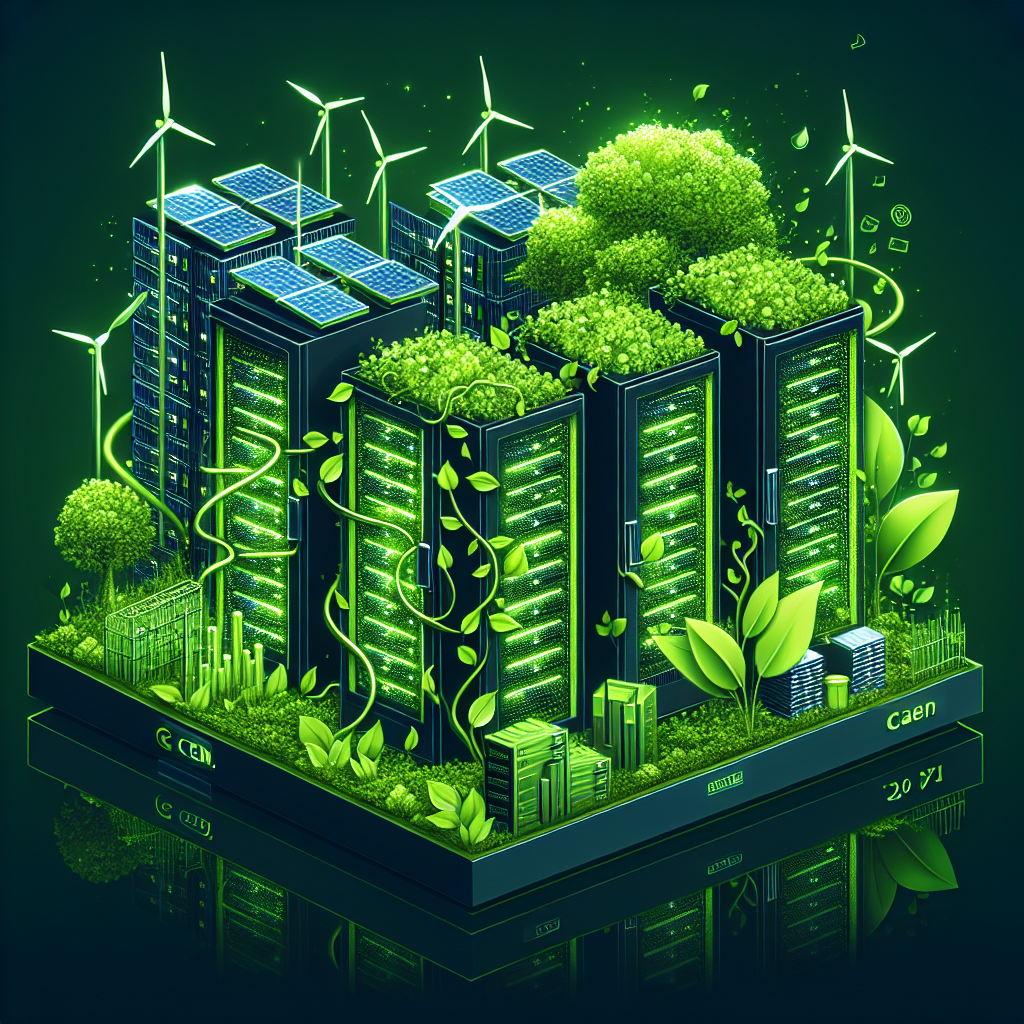
The Environmental Benefits of Green Data Centers
In recent years, businesses and individuals alike have become increasingly aware of the importance of sustainability and reducing their environmental impact. One area where this focus is particularly important is in the realm of technology, specifically data centers. Green data centers are becoming more and more popular as companies look for ways to reduce their carbon footprint and operate in a more environmentally friendly manner.So, what exactly are green data centers and what benefits do they offer for the environment? Green data centers are facilities that are designed and operated with a focus on energy efficiency and sustainability. This can include things like using renewable energy sources, implementing energy-efficient cooling systems, and utilizing virtualization technology to reduce the number of physical servers needed.
One of the key environmental benefits of green data centers is their reduced energy consumption. Traditional data centers can be incredibly energy-intensive, requiring massive amounts of electricity to power and cool the servers. By implementing energy-efficient practices and technologies, green data centers are able to significantly reduce their energy consumption, resulting in lower carbon emissions and a smaller environmental footprint.
Another environmental benefit of green data centers is their use of renewable energy sources. Many green data centers are powered in part or entirely by renewable energy sources such as solar, wind, or hydroelectric power. By utilizing these clean energy sources, green data centers are able to further reduce their environmental impact and support the transition to a more sustainable energy future.
Additionally, green data centers often incorporate water-saving technologies and practices to minimize their water usage. This is important as water scarcity is becoming an increasingly pressing issue in many parts of the world. By reducing their water consumption, green data centers are helping to conserve this precious resource and lessen their impact on the environment.
Overall, the environmental benefits of green data centers are clear. By reducing energy consumption, utilizing renewable energy sources, and implementing water-saving technologies, green data centers are able to significantly lessen their environmental impact and contribute to a more sustainable future. As businesses and individuals continue to prioritize sustainability, the demand for green data centers is only expected to grow, further driving innovation and progress in the field of environmentally friendly technology.
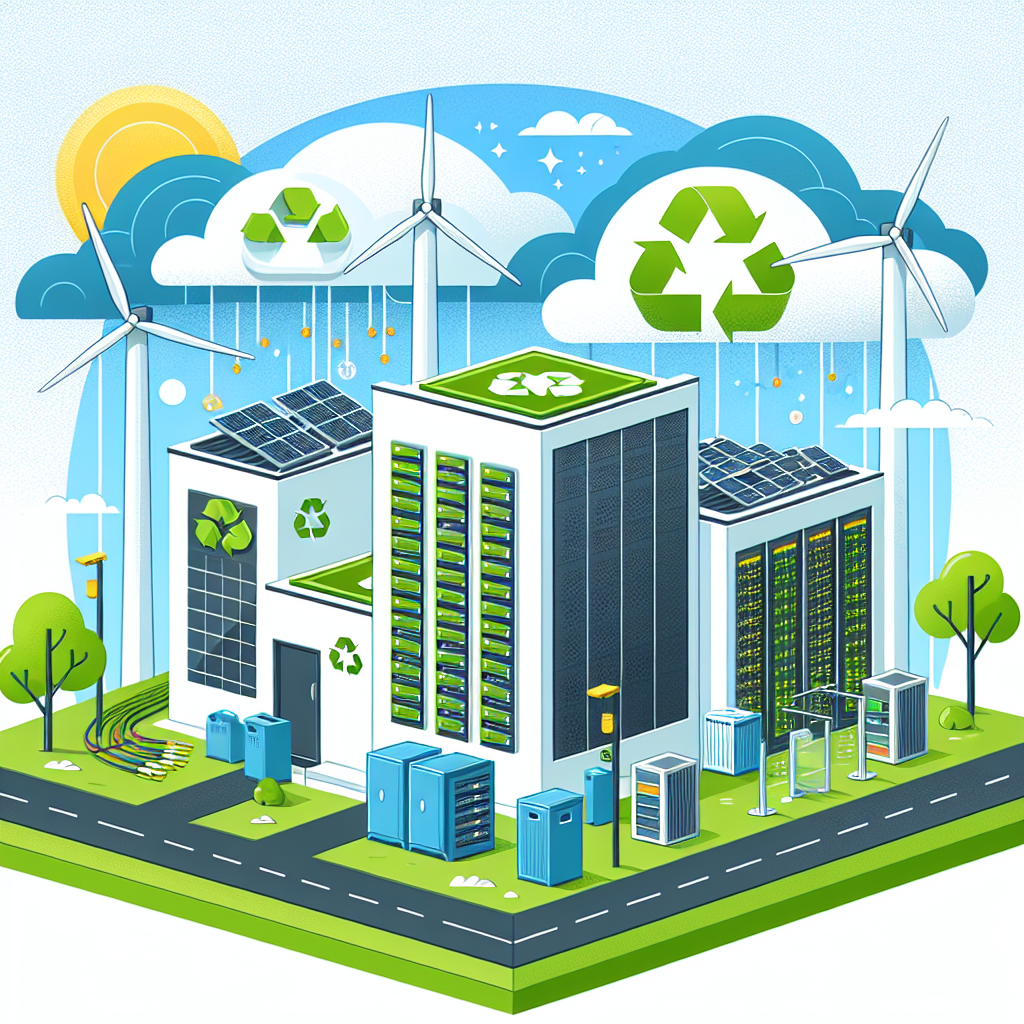
Data Center Sustainability: A Top Priority for Tech Companies
In today’s digital age, data centers play a crucial role in supporting the ever-growing demand for online services and applications. As the backbone of the internet, these facilities house and process massive amounts of data, requiring significant amounts of energy to operate efficiently. With the increasing awareness of environmental issues and the looming threat of climate change, data center sustainability has become a top priority for tech companies around the world.The environmental impact of data centers is substantial, with estimates suggesting that they account for about 1% of global electricity consumption. As the demand for data storage and processing continues to grow, so does the energy consumption of these facilities. This has led many tech companies to reevaluate their approach to sustainability and explore ways to reduce their carbon footprint.
One of the key strategies for improving data center sustainability is the adoption of energy-efficient technologies. This includes using more efficient servers, cooling systems, and power distribution units, as well as implementing advanced power management and monitoring systems. By optimizing the energy usage of these facilities, tech companies can significantly reduce their environmental impact and operating costs.
In addition to energy efficiency, tech companies are also exploring renewable energy sources to power their data centers. Solar, wind, and hydroelectric power are becoming increasingly popular choices for powering these facilities, as they provide a clean and sustainable alternative to traditional fossil fuels. By investing in renewable energy, tech companies can further reduce their carbon footprint and demonstrate their commitment to sustainability.
Furthermore, data center sustainability also involves proper waste management and recycling practices. E-waste, such as old servers, networking equipment, and other electronic components, can pose a significant environmental hazard if not disposed of properly. Tech companies are increasingly implementing recycling programs and partnering with certified e-waste recyclers to ensure that their old equipment is recycled or repurposed responsibly.
Overall, data center sustainability is a multifaceted issue that requires a holistic approach from tech companies. By investing in energy-efficient technologies, adopting renewable energy sources, and implementing proper waste management practices, these companies can reduce their environmental impact and contribute to a more sustainable future. As the demand for online services continues to grow, it is essential for tech companies to prioritize sustainability and take proactive steps to mitigate their environmental footprint.
